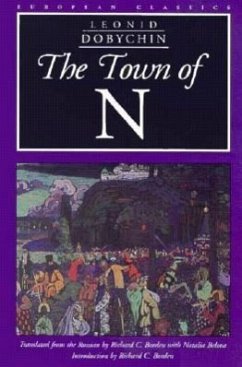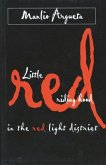Leonid Dobychin's Town of N, an unrecognized masterpiece of the Soviet 1930s, virtually vanished, together with its author, following publication in 1935 and the subsequent vilification of Dobychin by the Leningrad cultural authorities. Now, more than half a century later, this short masterpiece has been rediscovered, first in Russia in 1989, and now in this first English translation. In the years after his apparent suicide in 1936, Dobychin remained something of a cult figure among poets and the gay community in Leningrad, and his legacy was kept alive by a small but elite group of Soviet intellectuals. The present "rediscovery" of Dobychin and his masterpiece, according to one expert on Russian literature, could now become a cultural and scholarly event of some importance to Russian studies -- the one true revelation glasnost will generate for non-Soviet readers. The Town of N portrays a fallen provincial world reminiscent of the town of N found in Gogol's Dead Souls. It is populated with characters who are petty, grasping, perfidious, and cruel, quite unlike the positive heroes of contemporary socialist realist novels. What most distinguishes The Town of N is its literary quality, representing an extraordinary example of late Russian modernism with its roots in the writings of Gogol and Sologub. In this context, as a possible missing link in one of the most important lines in Russian literary development, it is the voice of Dobychin's child narrator -- fragmented, shortsighted, sometimes humorously pretentious -- that gives the novel its rich and eccentric verbal texture. This texture is in turn held together by a tightly woven and complex network of images, many of which draw onliterary allusions or religious iconography -- all of which makes The Town of N as important for its immense literary value as it is for its historical interest. In addition to a detailed introduction, the translator has included a set of comprehensive notes that will op
Hinweis: Dieser Artikel kann nur an eine deutsche Lieferadresse ausgeliefert werden.
Hinweis: Dieser Artikel kann nur an eine deutsche Lieferadresse ausgeliefert werden.






![[Chleb Rzucony Umarlym. English] [Chleb Rzucony Umarlym. English]](https://bilder.buecher.de/produkte/21/21921/21921517m.jpg)

